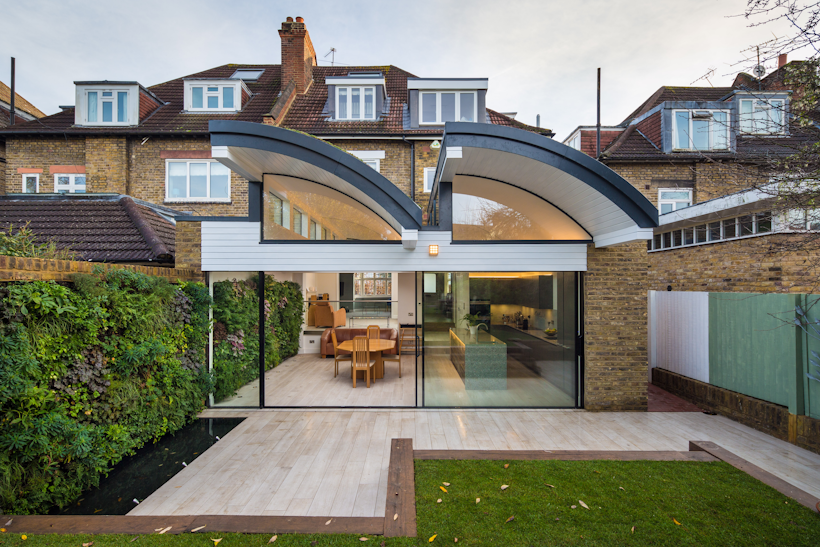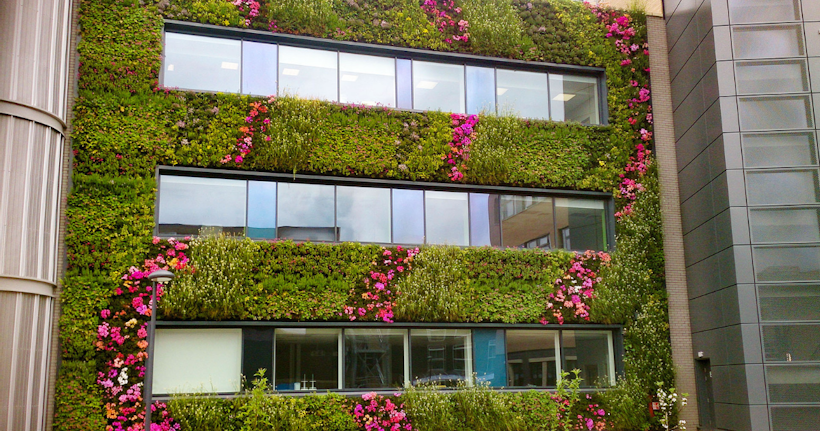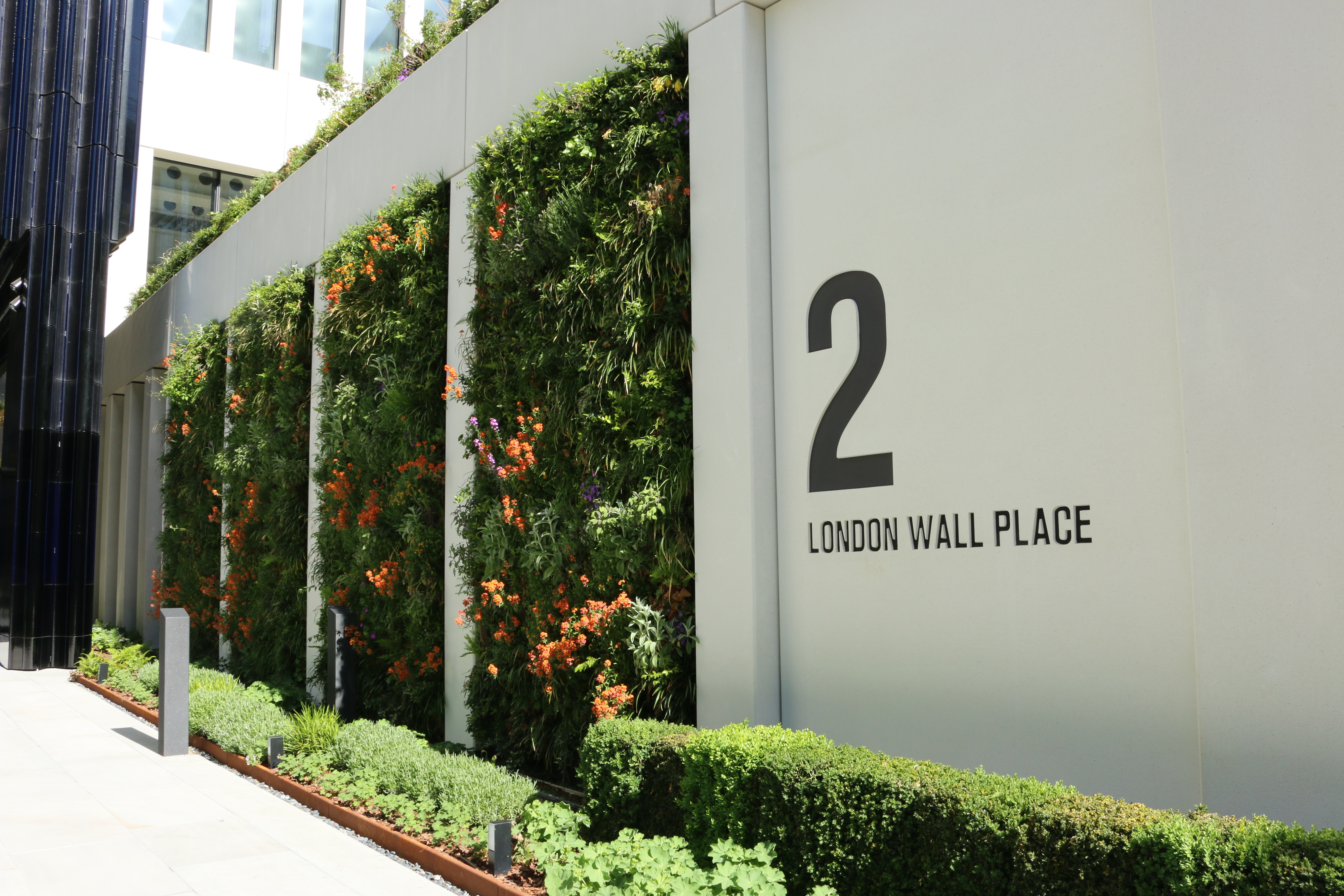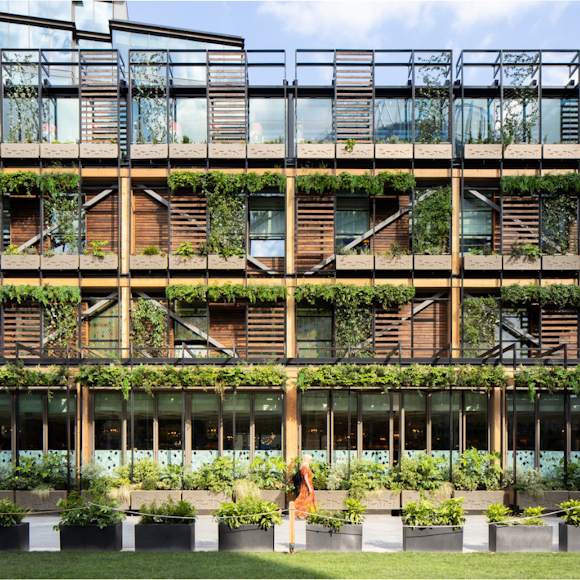The integration of nature into the built environment is a crucial aspect of creating a more sustainable future. With the rate of population growth rising each year, so too is the demand for housing and commercial buildings. With available space for construction being limited in most cities, building on natural spaces is often the only option.
As a result, connections between individuals and the natural world have diminished having a detrimental effect on people’s physical and mental health and well-being. Additionally, the urbanisation of natural spaces has led to significant environmental issues such as poor air quality, rising temperatures, and a reduction in wildlife species.
To address this, architects are adopting biophilic design as a new method of incorporating nature into urban landscapes. In this article, we are going to explore the three benefits of biophilic design in urbanised cities.
What is biophilic design?
Biophilic design is a principle in architecture and design that prioritises the connection between human beings and nature.
It entails the integration of natural elements, such as light, materials, and vegetation, into the built environment to create spaces that are not only aesthetically appealing but also enhance the well-being and health of people and the environment.
The objective of biophilic design is to provide opportunities for individuals to experience and interact with nature, even within the confines of urban settings, and improve environmental concerns such as air quality and biodiversity.

What are the benefits of biophilic design?
There are many benefits of biophilic design, the top three being:
Improved health and wellbeing
Biophilic design is based on the idea that humans have a natural desire to be around nature and other living things in order to live happier and healthier lives.
A global study by the University of Exeter in 2018, has shown that access to green spaces has been linked to a range of physical and mental health benefits. The study found that people who live near green spaces have, on average, a better overall sense of well-being, less stress, and improved mental health compared to those who live in areas with limited access to nature. Additionally, the study showed that exposure to green spaces can increase physical activity levels, improve sleep, and reduce the risk of various health problems, such as cardiovascular disease and type 2 diabetes. These findings highlight the important role that green spaces can play in promoting health and well-being in urban areas.
Environmental restoration
Responsible for 37% of energy and process-related CO2, the built environment has a huge impact on the health of the planet. Biophilic design aims to restore and conserve the natural environment through nature-based design processes and strategies.
For example, adding natural elements like green roofs or facades, with an abundance of plant life and trees can:
- Reduce ambient temperatures.
- Purify the surrounding air.
- Create habitats for insect and wildlife species such as birds, bees, and butterflies.
- Manage and filter out stormwater runoff.
Additionally, by exposing individuals to nature in their daily lives, biophilic design can increase environmental awareness and inspire eco-friendly behaviours, such as reducing waste and conserving resources. This creates a more harmonious relationship between humans and the environment, leading to improved environmental health.

Aesthetics
Although biophilic design principles go far beyond aesthetics, it is still worth noting the aesthetic benefits of urban biophilia.
The homogenization of the built environment through uniform architecture and monochromatic urban design is causing cities to lose their character and vibrance.
Biophilic design aims to restore visual appeal in cities by incorporating greenery, water features, natural light, and organic shapes to create a sense of peace and connection to nature, as well as visual stimulants for those within the city. This not only elevates the mood and well-being of those who occupy the space but also softens the harshness of the built environment, creating a more harmonious experience for all. The aesthetic benefits of biophilic design are a testament to its ability to not only promote health and sustainability but also provide a visually pleasing environment.

Biophilic design through Living walls and roofs from Viritopia
Are you in the early stages of development? Are you looking to capitalise on environmental assets? Are you interested in learning more about living walls? Then look no further. Our team at Viritopia has you covered.
Viritopia has over 20 years of experience designing and maintaining biophilic infrastructure to create a detailed analysis of how a scheme will meet regulatory requirements. We help with a faster planning process and provide you with what’s needed to take your project to the next level. Head to our site to book a living wall consultancy or explore more about our green walls and their benefits.


